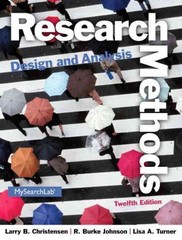


7. If the average duration of unemployment rises, other things being constant,
a. the participation rate will rise.
b. the unemployment rate will rise.
c. total employment must fall.
d. total unemployment must fall.
8. Which one of the following statements is false? a. It is possible for the total number of employed and the total number of unemployed to rise in the same period. b. It is possible for the total number of employed to rise and the unemployment rate to rise in the same period. c. If the average duration of unemployment falls, other things being constant, the unemployment rate will fall. d. The definitions of employment, unemployment, and labor force are not subject to disagreement among economists. 9. Discouraged workers are officially a. unemployed. b. employed. c. not in the labor force. d. in the labor force. 10. If stay-at-home dads were counted in the labor force and considered employed, then a. the male labor force participation rate would rise. b. the overall official unemployment rate would fall. c. overall official employment would rise. d. All of the above. 11. If inflation is anticipated, a. it is costless to society. b. debtors gain. c. it costs less to society than if unanticipated. d. creditors gain. 12. Which one of the following is least like the others? a. frictional unemployment b. seasonal unemployment c. discouraged worker unemployment d. cyclical unemployment(10 points) Pryde decides to re-evaluate its reinsurance program and is considering entering into a new reinsurance arrangement to provide indemnification for losses related to catastrophic events. Reinsurers offering this type of coverage follow one of two possible pricing approaches: Modeling Output approach II. Non Modeling Factors approach (a) (2 points) Associate each of the following items with the appropriate pricing approach(es). Justify your response. (i) Parameter risk (ii) Client / reinsurer relationship (iii) Reinsurance underwriting cycle (iv) Data quality (b) (/ point) Provide reasons why setting a higher attachment point would result in more favorable reinsurance pricing from the perspective of a reinsurer using: (i) Modeling Output pricing approach (ii) Non Modeling Factors pricing approach (c) (2 points) Evaluate how Pryde's lines of business might affect its catastrophe reinsurance premium (d) (2 points) Explain why a reinsurer would prefer receiving actual employee group information (as opposed to aggregate exposure by state) from Pryde when assessing its risk exposure to: (D) Natural disaster event (ii) Terrorism event (e) (/ point) Explain the role of capital in pricing catastrophe reinsurance. (f) (2 points) Identify considerations in addition to those in (b), (c), (d) and (e) that reinsurers take into account when pricing catastrophic reinsurance.(a) (5 points) Pryde's consultant, Hawthorne, computed Standalone Economic Capital Requirements separately for each of the following six risk types using a 99.4% VaR approach: Reserve Business Plan Catastrophe Credit Investment ALM For each risk type: (i) Define the risk (ii) Explain which of Pryde's lines of business contribute most to the risk. (iii) Describe the nature of the risk distribution. (b) (2.5 points) Assume each of the six risk types used to calculate Pryde's Economic Capital are independent. (i) Calculate the correlation and diversification adjustment if the NAIC Risk Based Capital (RBC) risk aggregation approach is applied to the standalone Economic Capital amounts. Show your work. (ii) Explain why the result in (i) differs from the diversification benefit developed by the consultants. Pryde is evaluating the consultant's recommendation to allocate capital by line of business. It has identified the Merton-Perold (M-P) and the Myers-Read (M-R) methods as two possible ways to allocate capital on a marginal basis. (c) (/ point) Describe the M-P and M-R approaches.(d) (1.5 point) Pryde is evaluating the following two business opportunities; 1. Entering the Commercial Auto Market II. Selling a new type of Personal Auto Policy Recommend which of the two capital allocation approaches to use for each opportunity. Justify your recommendation













